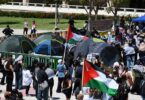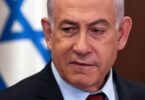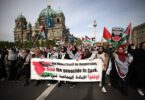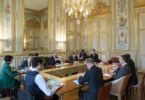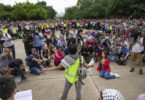Yosefa Loshitzky
‘Gaza as a Metaphor and the Right to be Human’, was the title of a paper that I wrote for a conference on International Law and the State of Israel: Legitimacy, Responsibility and Exceptionalism that took place in Cork, Ireland from March 31-April 2, 2017. Due to health issues, I was not able to attend the conference in person and my paper was read by my husband. From what I learnt afterwards, it stirred some emotions and, as expected, I was even accused (not for the first time) of being an anti-Semite and a Holocaust denier by a Christian attendee. I also found out later that the label “jihadist” was used to vilify me in some Israeli websites whose mission is to mark and label as “traitors” Jewish people, and particularly Israeli Jews, critical of Israel.
The accusation of being a Holocaust denier is beyond the grotesque. I was named Yosefa after my mother’s father Yosef, who was murdered in Treblinka, perhaps the most horrific Nazi extermination camp in Poland. My mother was the only survivor of her family. Only today, it occurred to me to look at the text of my paper, written in 2017 and referring mostly to the assault on Gaza in 2014. Going through the text again felt uncanny. A strange feeling of déjà vu with some past horror “show” that is currently being exponentially accelerated, multiplied and intensified in its ferocity, cruelty and velocity. The following is the original text of my 2017 paper: I would like to start by saying that despite the title of my paper I am fully aware that Gaza is not only a metaphor, but also a very harsh reality deliberately created and perpetuated by Israel. But metaphors can provide a useful way of exploring and understanding complex situations. Metaphors can also help to mobilise social and political protests and struggles.
In this paper I argue that Israel’s murderous assaults on Gaza over the last few years constitute a formative political moment, “the Gaza moment” which was manifested in a variety of ways including the 2009 students’ occupation movement and the growing calls for boycott, divestment and sanctions against Israel. Gaza as a site of extreme suffering inflicted by the state of Israel on the Palestinian people can be interpreted as a metaphor for a prison, a ghetto, a refugee camp, a space/state of exception in the spirit of Giorgio Agamben’s theorisation, an experimental laboratory for exercising total control and surveillance, a ground zone for a futuristic warfare and a showcase for arms trade. The attacks on Gaza introduce an apocalyptic vision of the present and the near present, a cataclysm of disaster capitalism where America’s “war on terror” through its proxy Israel can be more accurately described as America’s war on the world, a war, which as Mike Davies powerfully demonstrates, is specifically targeted against “the ‘feral, failed cities’ of the Third World – especially their slum outskirts,” where “the distinctive battlespace of the twenty-first century” (according to the Pentagon doctrine) will take place.
Gaza as a metaphor suggests that the “war” between gated Israel and ghettoized Palestine, applies to the current and future fortress globe, produced, perpetrated and perpetuated by the security sector. Gaza as a metaphor introduces the true face of the “clash of civilisations”, the battle of the civilised West against the dark and barbarian forces incarnated according to the moral discourse of the “free world” by asylum seekers, refugees, and the poor, the “criminals” and the “terrorists” in the post 9/11 planet. Gaza as a metaphor transcends the local specificity of the so-called Israeli-Palestinian conflict and becomes relevant to a broad matrix of glocal struggles for justice. Gaza, thus, acts as a mirror reflecting for different dispossessed groups their own local resistance and connects it with other similar acts of resistance in different parts of the globe. The appropriation of Gaza into the protest of the African American people in Ferguson in defiance of police brutality and racism is only one case in point.
Gaza as a metaphor opens a space for reading how the struggles of native Indigenous peoples and oppressed people all over the globe intertwine and how communities and cultures can and should resist their erasure. Gaza as a metaphor enhances Paul Gilroy’s critique of the Universal Declaration of Human Rights, where, as he argues, “Advocacy on behalf of Indigenous and subjugated peoples does not … merit more than token discussion as a factor in shaping how the idea of universal human rights developed and what it could accomplish.” Gaza as a metaphor represents, perhaps, the most extreme contemporary attempt to dehumanise a whole group of people turning them, in the perceptive words of Dr Mads Gilbert, the Norwegian doctor who volunteered to help al-Shifa Hospital during the recent attacks, into “untermenschen”, the word used by the Nazis to designate what they regarded as undesired sub-humans (Jews, Roma, Blacks, etc) who deserve to be exterminated.
Dr Gilbert’s observation was echoed by a Palestinian academic who visited the Yarmouk camp in Syria on a humanitarian mission and who said “I think sometimes that we do not belong to this world, that the Palestinian people are not part of humanity.” “IDF should be given the Nobel Peace Prize … for fighting with unimaginable restraint,” said Ron Dermer, the Israeli ambassador to the US at the Christian United for Israel summit in Washington. Dermer’s shameless statement attempts, of course, to mask the crimes against humanity committed by Israel in Gaza. Yet, in his plea to the world to stop Israel’s criminal attack on Gaza, Dr Gilbert uttered strong words on Israel’s abuse of words, in particular its invocation of the notion of “war of defence” to describe its atrocities. His attribution of designed cruelty to the Israeli war machinery, not surprisingly, resulted in Israel’s decision to ban this amazing human being from entering the Gaza Strip until his death.
The irony embedded in this ban cannot escape people who know Hebrew and are intimately familiar with Israel’s racist culture. Lech le Aza (literally: “go to Gaza” and metaphorically “go to hell”) is a common slang expression in Hebrew. Indeed, it is Israel that deliberately created this hell. To use Noam Chomsky’s words, Israel consciously employed “calculated sadism”. “Deliberate cruelty” an expression used by Talal Asad in his discussion of what he calls “redeeming the human through human rights” is another way to metaphorise Israel’s “defence doctrine”. The Dahiya doctrine (increased deterrence) is part of this “deliberate cruelty”. As Sara Roy explains in her analysis of the 2008-9 onslaught on Gaza, one of the reasons for the war on Gaza was “to enhance Israel’s deterrence capacity, particularly after its defeat in Lebanon in July 2006, and to rehabilitate Israel’s image as an effective ally in the American-led war against terror”.
Ilan Pappe explains that already in 2004, the Israeli army began building a dummy Arab city in the Negev desert and this phantom city became a dummy Gaza in the winter of 2006, after Hezbollah fought Israel to a draw in the north, so that the IDF could prepare to fight a “better war” against Hamas in the south. As Roy explains this generic city known as Baladia was built by “the US Army Corps of Engineers and funded largely from US military aid”. Perhaps the cruellest metaphor applied to Gaza within the framework of Israel’s policy of deliberate cruelty is the view of Gaza as a lab. Since the 1973 Arab-Israeli War and the growing hegemony of the US in the Middle East, the new Pentagon doctrine for 21st-century warfare is targeted against the “feral Muslim cities” of the third world and not against conventional armies. Gaza is the experimental laboratory for Israel (and the US) high-tech arms trade industry. It is the ground zone for the futuristic warfare signalling a shift from a war against armies to war against guerilla and popular resistance.
Gaza, as many scholars and analysts demonstrate is a showcase for the Israeli and American arms industry. “We tried it on people in Gaza and it works” is a guarantee for a successful marketing strategy for “battle tested weapons”. The Israeli arms industry, as Shir Hever demonstrates, depends on the cycle of attacks every two years. After each attack there is a big showcase. For Israeli arms makers, Shuki Sadeh explains, the Gaza war is a cash cow.
Factories worked around the clock turning out munitions as the army tested their newest systems against a real enemy. “For the defense industries this campaign [Operation Protective Edge] is like drinking a very strong energy drink – it simply gives them tremendous forward momentum,” said Barbara Opall-Rome, Israel bureau chief for the US magazine Defense News. “Combat is like the highest seal of approval when it comes to the international markets. What has proven itself in battle is much easier to sell.” Deliberate cruelty was joined by spontaneous grass roots cruelty expressed by the Israeli public particularly during the 2014 attack. Aggression and extreme racist hostility and cruelty against the Palestinian people was acted out not only on what the Israelis call the “battlefield” (a euphemism for the Gaza strip, the most densely populated stretch of land on the planet), but also on the virtual public sphere, where social media and the web have become a toxic site reigned by triumphal and virulent racism.
Even a random sample of reactions to Operation Protective Edge published online by Yedioth Ahronoth, Israel’s most popular newspaper, opens a door into the heart of this dark world of Israeli racism, usually not scrutinised under the Western eye. These online reactions operate as a social text revealing and exposing not only escalating Israeli racism against Palestinians, Arabs and Muslims, but also the contradictions and tensions that are endemic to this special brand of racism. For example, one of the Israelis wrote “Operation Cast Lead, Operation Pillar of Defense, Operation Protective Edge … how many times can you market the same brand? Is not it time for Operation Extermination? He used the expression “mivtza hisul” that is the Hebrew jargon for final sale, but also for “exterminating terrorists”. The dehumanisation of the “enemy”, is prevalent in this random, yet very typical, example in which the Palestinians are viewed as the surplus of humanity, a form of “human waste”, to use Zigmunt Bauman’s imploded language, that needs to be cleansed and expelled from “the land of Israel”.
Excluding Gaza and the Palestinians at large from the domain of the “human” operates also in the academic/scholarly/intellectual front. Rosemary Sayigh, eloquently discusses the Nakba’s exclusion from the “trauma genre”. According to her, Judith Butler’s notion of the grievable and ungrievable people explains what are the boundaries of recognition of suffering and identification of suffering between the Muslim peoples and the Christian peoples. Sayigh argues that the trauma theorists/critics never theorise the field in terms of global power asymmetry … nor do they clarify how suffering in the non-Western world may differ from European modes in its causes, local understanding, forms of expression, etc. Even postcolonial studies, as Bart Moor-Gilbert suggested, were ostensibly slow to register Palestine, ironically (or not) even though the field was decisively shaped by the Palestinian exile Edward Said. For a long time, critical attention to Said within the field focused almost solely on Orientalism, the obvious attraction of which was its “modular” applicability to the much wider range of contexts typically engaged by postcolonial scholars than those on which Said focused primarily – the Middle East, including Palestine/Israel.
In a recent fascinating article on the concept of Palestine, historian Nur Masalha, shows how in the Hebrew Bible the Philistines “were constructed as a typical ideological scapegoat” arguing that “Modern European racism and Biblical constructs and even hatred of the Philistines” has survived in the derogatory connotations of the concept of “a Philistine”. These pejorative connotations, I would like to add, are also evident in the canon of Western art, particularly in the Baroque period in paintings such as Rubens’ Samson and Delilah. The Jewish French scholar Esther Benbassa explains that the attendance of French politicians in the annual dinners of the Representative Council of Jews of France (CRIF) reinforces the view of Arab Muslims and Black people of the Jews as insiders, “while they remain outsiders”.
She argues that because of the ongoing Israeli-Palestinian conflict, Arab Muslims tend to identify with the plight of Palestinians in the occupied Territories “assimilating the injustices which they face in Europe with the victimisation of their ‘brothers’ under the Israeli occupation”. It is not surprising therefore, that Gaza has acquired the status of a global metaphor for injustice or of reclaiming justice. And it is not accidental that the most common chant at the demonstrations against Israeli attacks on Gaza is “What do we want? Justice! When do we want it? Now! Free Free Palestine!”


